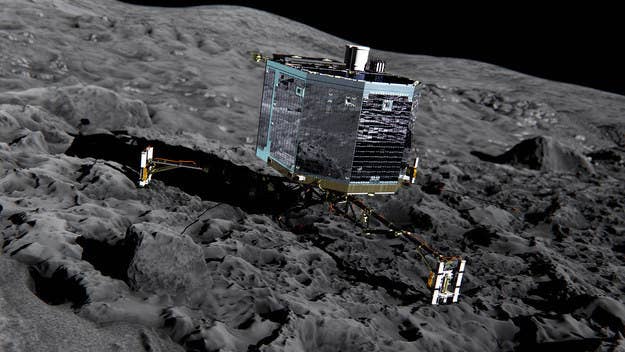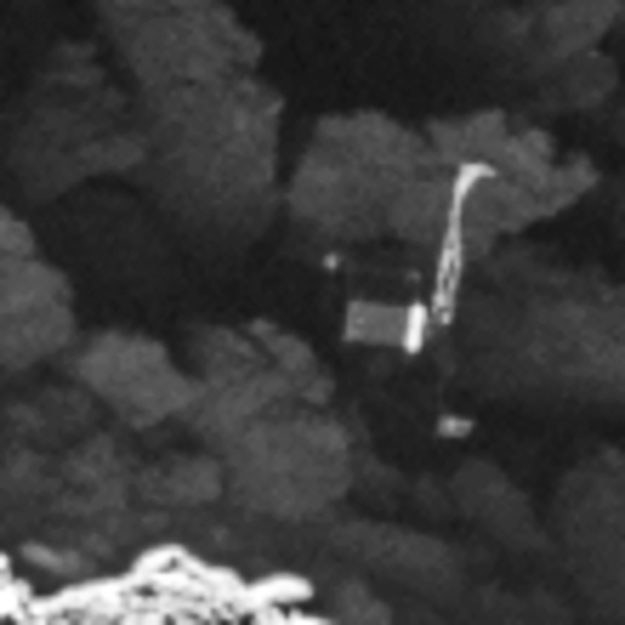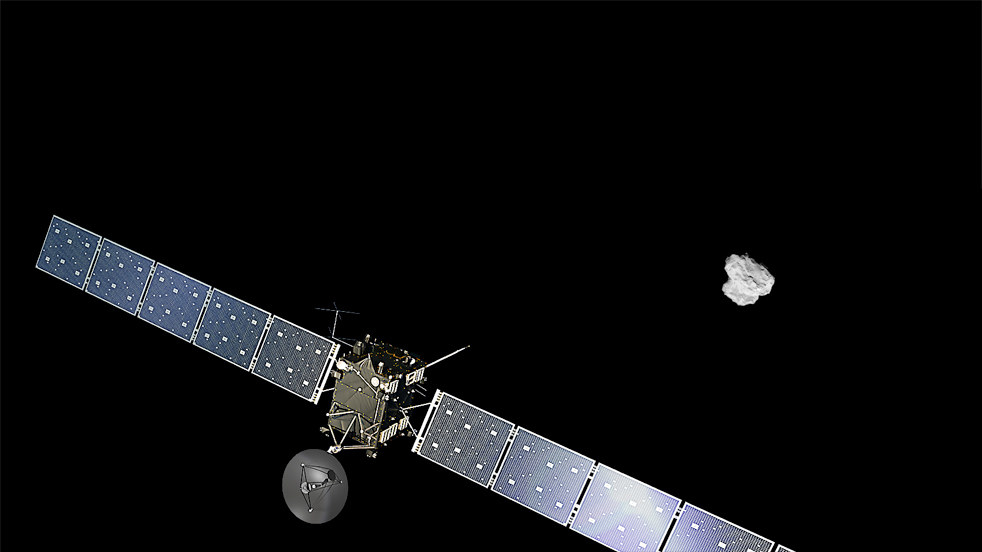The European Space Agency (ESA) has just announced that it's spotted the final resting place of Philae, the little robot that landed on a comet.

The official Rosetta Twitter feed announced the news, with pictures showing the boxy little spaceship lying rather sadly in the shadow of a boulder.
THE SEARCH IS OVER! Iâve found @Philae2014!! https://t.co/a39zKc4Tz3 #CometLanding #PhilaeFound
The ESA Rosetta team are understandably ecstatic to have found their lost robot. “We are so happy to have finally imaged Philae, and to see it in such amazing detail,” said Cecilia Tubiana, one of the scientists who works on Rosetta's OSIRIS camera, in a release.
Here's that close-up shot.

That long light line to the right is its leg, while various of its instruments can be made out to its left, as the Rosetta Twitter feed explains.
Philae was carried through space for 10 years by its mothership, Rosetta, which is still orbiting the comet.

It was an incredible technical achievement – the first time humans managed to put a spaceship into orbit around a comet. It's hard to do, because comets are small and fast-moving.
It landed on the comet 67P/Churyumov–Gerasimenko in November 2014, but things went wrong almost immediately.

Gravity on the comet is 10,000 times weaker than on Earth, so landing was always going to be tricky. Unfortunately for Philae, both its systems that were supposed to keep it attached to the comet – a harpoon and some thrusters – failed.
Instead of landing in a nice sunny place where it would get lots of light on its solar panels, it bounced about half a mile back into space and landed in shadow.
Now that Iâm safely on the ground, here is what my new home #67P looks like from where I am. #CometLanding
That meant it couldn't charge its batteries very well. It did about 60 hours of science, and sent back very interesting data, but then had to go into hibernation.
In June last year, as the comet flew close to the sun, Philae was briefly revived…
Hello @ESA_Rosetta! I'm awake! How long have I been asleep? #Lifeonacomet
…but then the comet started travelling away from the sun again. In July this year, Rosetta stopped even trying to make contact with it.
My power is decreasing so far from the Sun I can no longer listen for @philae2014: https://t.co/MZ3JiOB6pO
Rosetta and Philae will orbit the sun with 67P/Churyumov-Gerasimenko for as long as the comet survives. It's not clear how long that will be.
The comet's orbit changes every time it loops around the sun every six and a half years, because Jupiter pulls it on to a subtly different course each time. It may not survive many more – it could break up, or crash into the sun.
But while Philae won't be sending back any more jaunty little tweets from the far reaches of the solar system, at least we know where it is now.
Rest in peace, little buddy. Keep hurtling around the sun at 84,000 miles an hour. There are probably worse ways to go.
